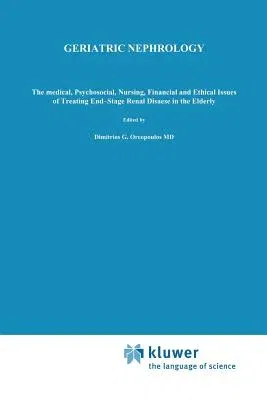Geriatric Nephrology: The Medical, Psychosocial, Nursing, Financial and Ethical Issues of Treating End-Stage Renal Disease in the Elderly (Softcover RPaperback - Softcover Reprint of the Original 1st 1986, 26 September 2011

Qty
1
Turbo
Ships in 2 - 3 days
In Stock
Free Delivery
Cash on Delivery
15 Days
Free Returns
Secure Checkout
Part of Series
Developments in Nephrology
Print Length
293 pages
Language
English
Publisher
Springer
Date Published
26 Sep 2011
ISBN-10
9401083894
ISBN-13
9789401083898
Description
Product Details
Book Edition:
Softcover Reprint of the Original 1st 1986
Book Format:
Paperback
Country of Origin:
NL
Date Published:
26 September 2011
Dimensions:
23.39 x
15.6 x
1.68 cm
Genre:
Elderly/Aged
ISBN-10:
9401083894
ISBN-13:
9789401083898
Language:
English
Location:
Dordrecht
Pages:
293
Publisher:
Series:
Weight:
444.52 gm

